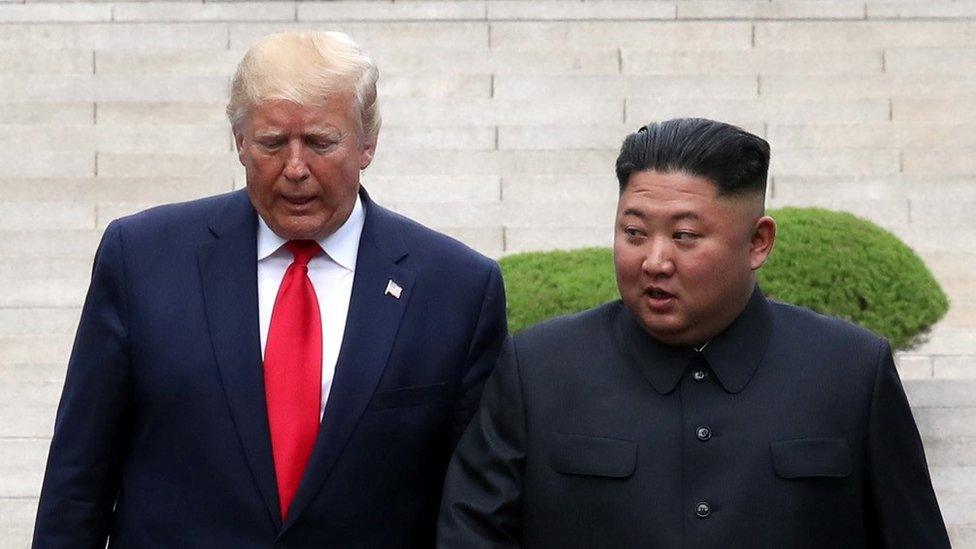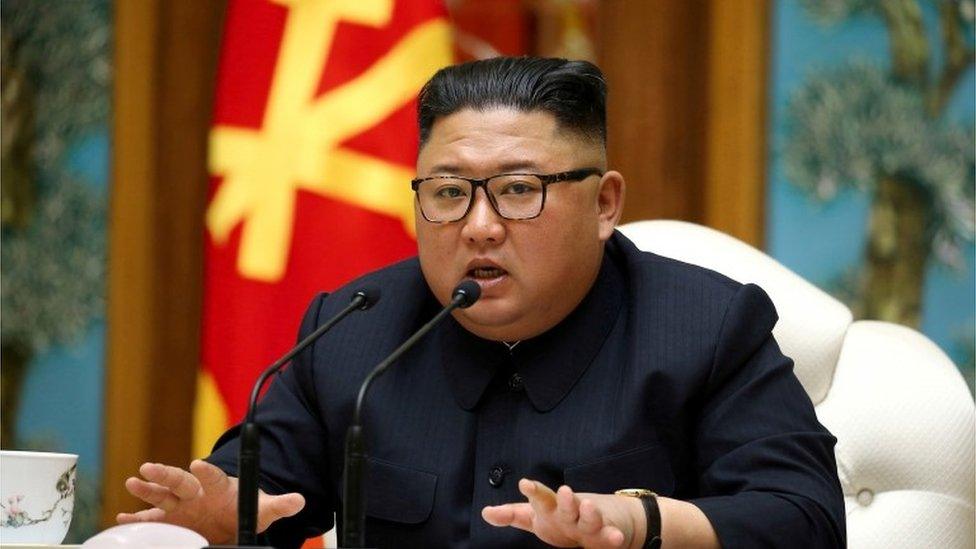North and South Korea in gunfire exchange after Kim Jong-un reappears
- Published

It is not clear what provoked the initial gunfire
North and South Korea have exchanged gunfire in the Demilitarised Zone (DMZ) which divides the two countries.
Seoul's military said shots from the North hit a guard post in the central border town of Cheorwon. It said it returned fire and delivered a warning announcement.
Such incidents across the world's most heavily fortified border are rare.
US Secretary of State Mike Pompeo told US media the shots from the North were believed to be "accidental".
Meanwhile South Korea's Yonhap news agency quoted a government official as saying the shots were not likely to have been intentional.
No injuries were reported in the incident. Military officials in the South say there was no sign of unusual troop movements.

There's a "low possibility" that the shots fired by North Korea were intentional, according to the South Korean military. But at this stage it is unclear how they've made that assessment.
Even if it was an accident or a miscalculation, it shows just how important it is for troops to keep level heads in the heavily fortified DMZ to ensure the situation isn't made much worse.
If it was a more tactical decision by North Korea then that's a very different matter.
The timing is interesting. It's just 24 hours since the North Korean leader Kim Jong-un re-appeared after a 21-day absence. There have also been a large number of military drills in the North in recent months to improve readiness to fight an "actual war", according to state media.
Pyongyang has sometimes used the tactic of escalate to de-escalate, using its military posturing as leverage in later negotiations.
But any sign of direct fire will be a disappointment to many in South Korea. There has been a lot of work in the last two years to ease tensions between the two countries after President Moon Jae-in met Kim Jong-un. The two sides signed a military agreement - any deliberate shots fired would breach that pact.

The last time the North opened fire on the South happened in 2017 when a North Korean soldier made a dash across the military demarcation line to defect.
The demilitarised zone (DMZ) was set up after the Korean War in 1953 in order to create a buffer zone between the two countries.
For the past two years, the government in Seoul has tried to turn the heavily fortified border into a peace zone.
Easing military tensions at the border was one of the agreements reached between the leaders of the two countries at a summit in Pyongyang in September 2018.
Kim Jong-un's reappearance in public, reported by North Korean state media on Friday, followed an almost-three-week unexplained absence that sparked intense global speculation about his health.
- Published2 May 2020

- Published3 May 2020

- Published21 April 2020
